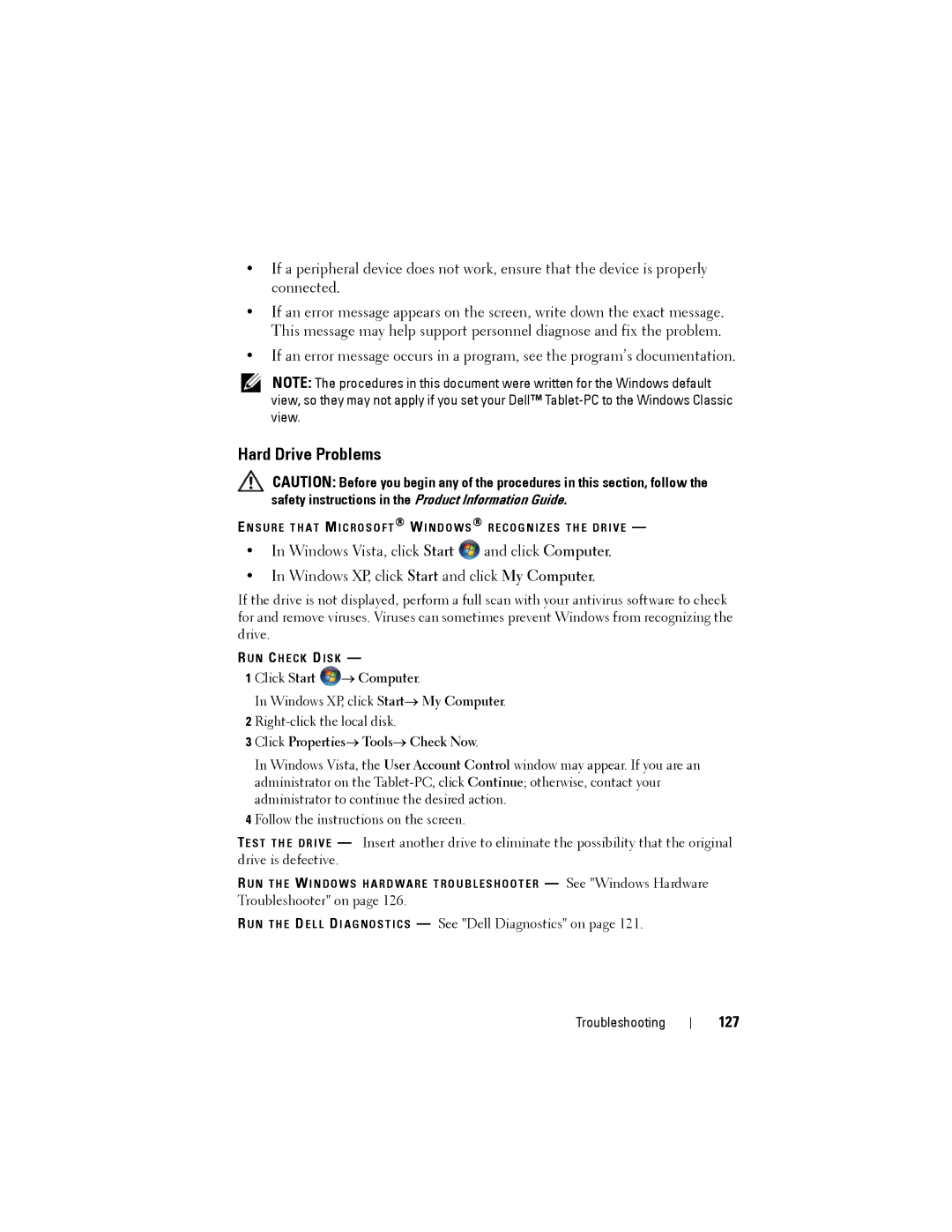
•If a peripheral device does not work, ensure that the device is properly connected.
•If an error message appears on the screen, write down the exact message. This message may help support personnel diagnose and fix the problem.
•If an error message occurs in a program, see the program’s documentation.
NOTE: The procedures in this document were written for the Windows default view, so they may not apply if you set your Dell™
Hard Drive Problems
CAUTION: Before you begin any of the procedures in this section, follow the safety instructions in the Product Information Guide.
E N S U R E T H A T MI C R O S O F T ® W I N D O W S ® R E C O G N I Z E S T H E D R I V E —
•In Windows Vista, click Start ![]() and click Computer.
and click Computer.
•In Windows XP, click Start and click My Computer.
If the drive is not displayed, perform a full scan with your antivirus software to check for and remove viruses. Viruses can sometimes prevent Windows from recognizing the drive.
R U N C H E C K D I S K —
1 Click Start ![]() → Computer.
→ Computer.
In Windows XP, click Start→ My Computer.
2
3 Click Properties→ Tools→ Check Now.
In Windows Vista, the User Account Control window may appear. If you are an administrator on the
4 Follow the instructions on the screen.
TE S T T H E D R I V E — Insert another drive to eliminate the possibility that the original drive is defective.
R U N T H E W I N D O W S H A R D W A R E T R O U B L E S H O O T E R — See "Windows Hardware
Troubleshooter" on page 126.
R U N T H E DE L L DI A G N O S T I C S — See "Dell Diagnostics" on page 121.
Troubleshooting
